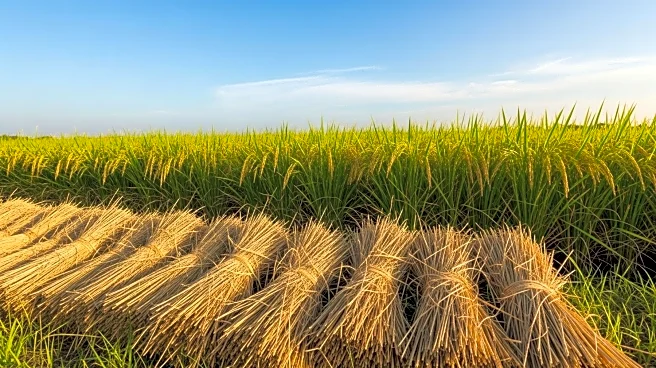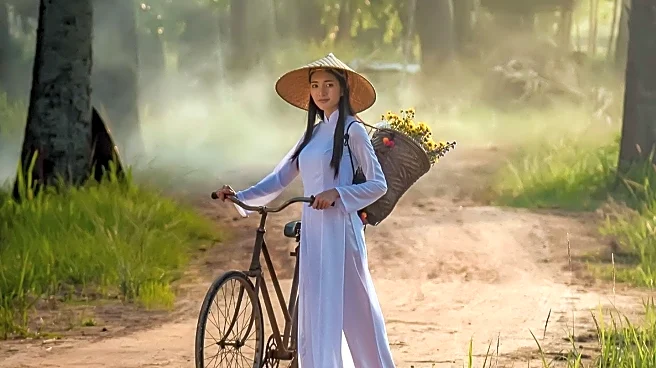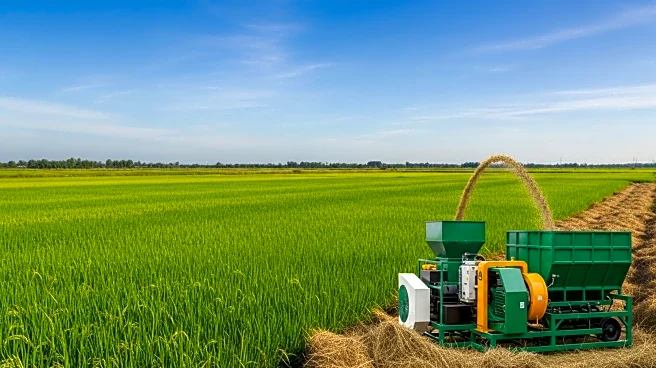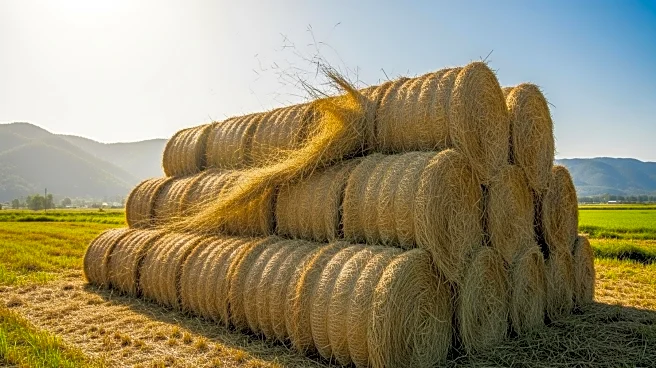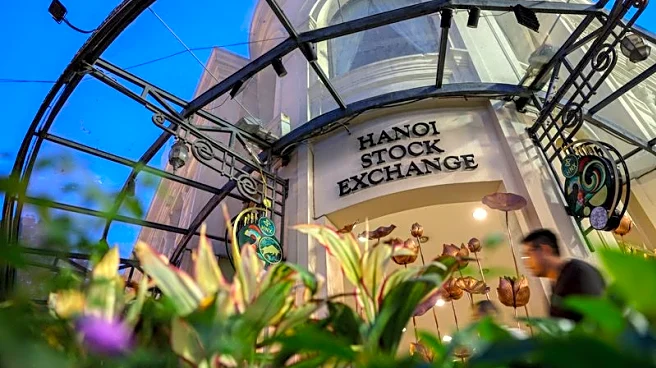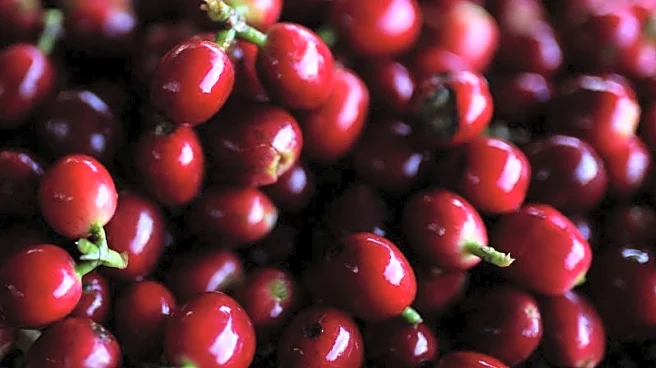What is the story about?
What's Happening?
Vietnam is transforming rice straw from a climate burden into a source of income through circular agriculture models. A recent Farmers’ Field Day in the Mekong Delta showcased the success of these models, organized by the Department of Crop Production and Plant Protection of Can Tho City, in collaboration with the International Rice Research Institute and the Vietnam Rice Industry Association. The event demonstrated techniques for growing straw mushrooms and producing organic fertilizer from rice straw. The initiative is part of the 'One Million Hectares of High-Quality and Low-Emission Rice Program,' which aims to reduce emissions and increase farmer income.
Why It's Important?
This initiative represents a significant shift in agricultural practices, moving away from traditional straw burning, which contributes to pollution, towards sustainable practices that enhance farmer income and environmental health. By adopting circular economy models, farmers can increase rice yields and reduce costs, while also contributing to climate mitigation. The program's success has led to the creation of sustainable business models, job creation, and improved farmer capacity. This approach not only benefits the local economy but also sets a precedent for sustainable agricultural practices globally.
What's Next?
To sustain this progress, local governments and the agricultural sector must prioritize supportive policies and incentives for farmers. Strengthening cooperatives and establishing robust value chains will be crucial for connecting farmers with businesses that utilize straw for various products. The use of digital tools and continuous technical support will further enhance the program's impact. The success of this model could lead to its expansion throughout Vietnam, promoting a green, responsible, and sustainable future for rice production.
AI Generated Content
Do you find this article useful?
